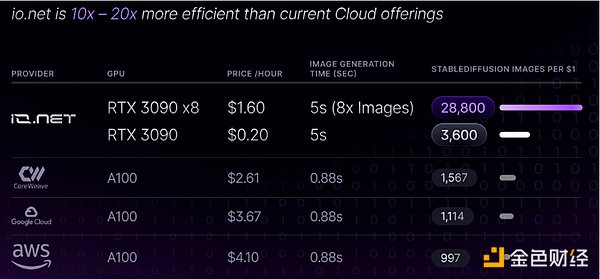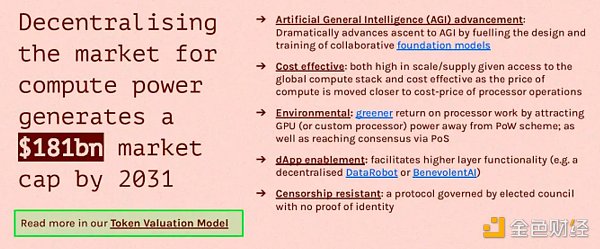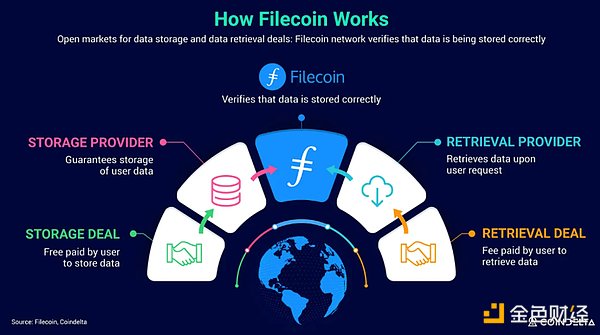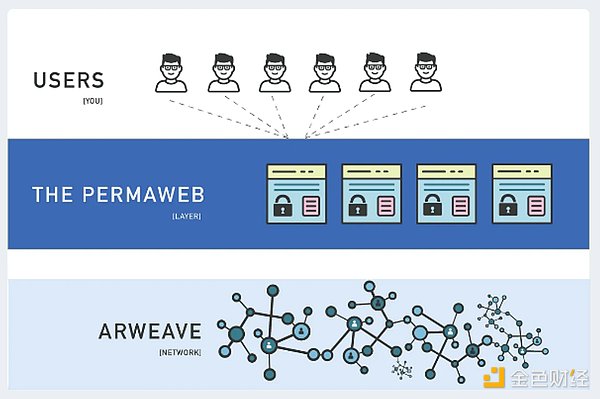Author: David C, author of Bankless; Compiled by: Golden Finance xiaozou
In the past few decades, we have experienced several waves of artificial intelligence hype, but this time it feels different. The technology was there, and investors saw the opportunity. But despite the huge potential for value creation, the tech giants seem intent on gobbling up the opportunity.
Don’t worry, crypto developers are working on a solution.
With the accelerated application of artificial intelligence, the demand for computing power and data storage is also facing severe pressure. An emerging class of protocols is driving the development of decentralized virtual infrastructure (DeVIN). The technology uses blockchain to create markets and expand access to GPUs and data storage.
In this article, we will introduce the current computing bottleneck crisis, the overall advantages of DeVIN, and outstanding projects leading the field.
1. The centralization problem of artificial intelligence
Sam Altman of OpenAI recently stated in a news report that tens of thousands of people will be needed to deal with the recent development challenges of artificial intelligence. One hundred million U.S. dollars. In fact, model training costs are expected to reach 1% of U.S. GDP (over $100 billion) in the next few years.
This historic demand is overwhelming computing supply lines, and the DeVIN protocol provides a potential solution to these challenges.
DeVIN is mainly divided into decentralized computing protocols and decentralized data storage protocols based on solutions.
While the market capitalization of AI-related tokens is soaring, the reality is that many of these projects are still in their infancy. While much of the investor behavior can be attributed to betting on the AI + Crypto craze, these protocols are building a vision in which everyone in the crypto space can participate - our artificial intelligence future world will usher in greater power. Centralization and more community ownership.
Let’s take a look at a few DeVIN protocols that are at the forefront.
(1) Decentralized Computing Protocol
By leveraging underutilized global resource networks, DeVIN platforms such as io.net, Gensyn and Grass aim to Solving the computing crisis in artificial intelligence.
By developing markets where everyone can contribute CPU/GPU or storage power and be rewarded, these protocols not only create more competition among infrastructure providers, but also by democratizing access to resources. Make AI development itself more competitive.
 < span style="font-size: 14px;">io.net
< span style="font-size: 14px;">io.net
io.net provides access to computing power by creating a decentralized network that leverages data from Taking underutilized GPUs from sources such as data centers and crypto miners to reduce costs and increase the availability of cloud computing resources, weaving them into a cohesive system that delivers considerable processing power at a fraction of the traditional cost . Recently, io.net launched its Ignition program, opening its platform to anyone who wants to provide GPUs for the network ahead of the token launch in April.

Gensyn
Gensyn also hopes to solve current computing limitations through DeVIN. Like io.net, Gensyn directly connects unused processing power in the global network with in-demand machine learning projects, using market mechanisms to support this exchange. Gensyn’s focus on machine learning applications sets it apart from other DeVIN projects. In addition to providing computing power, Gensyn can verify that work and model training are completed correctly, ensuring that training performed on behalf of a party in the network is trustworthy and reliable.

Grass
Grass is a decentralized network that collects public network data to train artificial intelligence models. By installing the browser extension, users run a node on Grass and contribute available internet bandwidth to the network, allowing its partners to collect public website data and train their models. Users are then compensated for their contributions (since Grass is currently in beta testing, users may be compensated in the future).

(2)< strong>Decentralized Data Storage Protocol
Now, let’s study the data storage class DeVIN.
These solutions are more mature than computing solutions, but they are still an early bet, and the decentralized data storage market will need to deal with the massive resource constraints of effectively training artificial intelligence for the bet to be successful. It is estimated that by 2025, more than 175T gigabytes of data will be stored globally, reducing costs and making its structure more efficient will greatly impact data training in artificial intelligence and data management.

Filecoin
Filecoin’s data storage solution impacts global data, turning unused storage space into An active and accessible market. The protocol is known for its practices of storing data, encrypting it, replicating it, and distributing it across the network, making it highly resistant to censorship and data loss, and far cheaper. Filecoin provides a reliable decentralized support for the data layer of artificial intelligence, which is fully consistent with the use case of blockchain as a tamper-proof data center.
The platform uses a unique model to verify storage, ensuring that data stored on the network remains secure and accurate over time. The verification process is a crucial step as Filecoin aims to prove that decentralized storage can outperform traditional cloud storage solutions.

Arweave
Arweave takes an innovative approach to data storage, positioning itself as a permanent archive in the digital age , rather than a temporary repository. Rather than using a “rent” model for data storage, the protocol uses a “buy” model, where a one-time payment ensures that data can be stored on its decentralized network for centuries. Security is provided by AR, a mintable token. Arweave’s ambitious vision to build a permanent decentralized network is a major leap forward in the pursuit of sustainable secure data storage solutions.
Arweave has expanded on the basis of data storage and recently launched the Arweave AO public test network, stepping into the field of decentralized computing. This update transforms Arweave from a storage solution into a holistic computing platform with a "super-parallel computer" capable of handling heavy computing workloads.
2. Future Outlook
Although DeVIN is at the forefront of encryption technology, the road ahead is still full of many challenges.
The above-mentioned protocols appeared earlier than their market value. With the development of generative artificial intelligence, the largest participants in artificial intelligence have begun to launch the AGI countdown, and time is of the essence.
Projects such as io.net, Gensyn, Grass, Filecoin and Arweave emphasize the critical role that decentralized computing and storage play in opening up markets and reducing entry costs. They also emphasize the urgent need for DeVIN to solve the current Adoption barriers to fully supporting the growing computing demands of artificial intelligence.
While the marriage of crypto and AI may seem like a memetic phenomenon to many, democratizing the infrastructure needed to compete in AI is not.
The computing and data storage challenges faced by artificial intelligence highlight the clear need for DeVIN solutions. However, realizing these benefits will require addressing early adoption issues, regulatory hurdles and the ongoing GPU arms race. Obstacles like these still prevent DeVIN from becoming the backbone of AI infrastructure.
For DeVIN participants, there is much at stake if they do not achieve product-market fit soon, and the next few months will open a unique window for decentralized computing providers to Securing their position in the market. The stakes are high!
 Wilfred
Wilfred

 < span style="font-size: 14px;">io.net
< span style="font-size: 14px;">io.net









